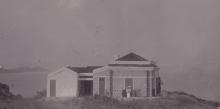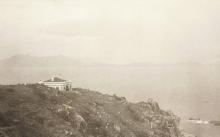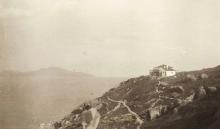[Updated 21/11/2025]
In the late 19th century, the Rev Alexander Don was a pioneering European missionary to the Chinese community in New Zealand working in NZ gold mines, who identified that most of them came from villages near Canton and envisioned significant evangelistic opportunities in South China.
Acting on behalf of the Presbyterian Church, Don visited Canton in 1896–97 to explore the possibility of establishing a mission there. Despite local mistrust of foreigners, Don was received positively due to his connections with NZ Chinese gold miners’ families. On returning to New Zealand, he created the "Canton Villages Mission" whose aim was to evangelize a million Chinese.
The first CVM missionary, Rev George McNeur, started with Rev Don in Canton in 1901. He focused on the Poon Yue District, where many miners originated. From 1902, women volunteers in New Zealand joined the mission and, after training, also started in Canton in 1905.
As early as 1914, the CVM purchased/built holiday bungalows on the island of Cheung Chau, Hong Kong, for staff to use during the hot summer months for annual holidays. Every seven years the Missionaries had one year's furlough (leave) back to New Zealand. This was not really a holiday as Missionaries had weeks of 'deputation work' with relentless touring drumming up support for the Missionary cause.
Goals and main features
The core of the mission was preaching the Gospel, distributing religious tracts, and selling Bibles (not for profit). Missionaries visited villages, towns, and individual homes to spread their message.
The mission established boarding schools to provide Christian education to children, aiming to instil Christian values and counter non-Christian influences. Students who excelled were encouraged to become teachers.
Medical services were used as a means of evangelism, with missionaries providing care and health education while also preaching Christian principles.
The mission's goal was to create churches that could sustain themselves financially and govern themselves, rather than relying on external support.
Japan invades
Japanese Imperial Forces invaded China in July 1937, understating the conflict as 'The China Incident.' (Nothing new!). By 1938, they had reached Canton, preceded by aerial bombings that destroyed towns in their way.
Mission work persisted under strict limitations and without many Chinese Evangelists, who had fled before the Japanese arrived. Mission staff faced repeated risks, with the British Consul-General advising evacuation for safety amid ongoing battles. Japanese guards strictly inspected travel and tolerated but did not support the Mission.
The Mission was renamed "The South China Mission" in 1938 to reflect its evolving role.
World War & Internment
After the Japanese invasion of Hong Kong in 1941, nine missionaries suddenly became 'Enemy Aliens' and were placed in Internment camps in Canton, Shanghai and Hong Kong.
Conditions at the Stanley Internment Camp at Hong Kong were always relatively harsh. One of the SCM internees, Dr Alistair Loan, as well as a previous CVM Doctor, Dr Edward Kirk, both assisted with medical care among the internees. Margaret Davies, another CVM missionary was interned there, but later allowed to join her husband Rev Herbert Davies, interned in Shanghai.
Post-War Recovery
At the end of the war in 1945, the Chinese Church was in disarray and in dire need of practical and financial assistance to rebuild. They could not do without the presence and practical support of the foreign missions at this time.
The NZ South China Mission /CVM had suffered the loss of 9 out of its 10 chapels and the destruction of the holiday homes at Cheung Chau.
Slowly, and especially after the interned Missionaries had returned from their long overdue furloughs in NZ, the program of Christian Evangelization, Children's education and Bible training began again in earnest.
The End of The Mission
However, during 1949, Chinese Communist forces rapidly gained control of Northern China and reached Canton in October. All Missionaries were advised to leave and many did so. By April 1951, all but one had exited China.
Thus ended the NZ Presbyterian Church South China Mission/CVM. It was truly a saddening experience to find doors that finally appeared to be opening wider than before, suddenly being closed. It had lasted from 1901 until 1951. Over those fifty years, 50 Missionaries had been sent out to China. For its long serving staff, the New Zealand Church paid them an annual pension, which compensated to some extent for all they had been through.
However, new doors opened as refugees began to stream into Hong Kong from Communist China creating a social need for Missions as well as being based in a politically stable and supportive British colony with Christian sympathies. The Church of Christ in China set up anew in Hong Kong and invited participation from New Zealand. And so began the Hong Kong Mission.
Source:
The Presbyterian Church of Aotearoa New Zealand - 'The Canton Villages Mission'



Comments
CVM Staff 1915
1915 The staff of the Canton Villages Mission, taken at the CVM Manse, Fong T'suen. Showing the McNeurs and the Davieses.
Source: Presbyterian Research Centre NZ